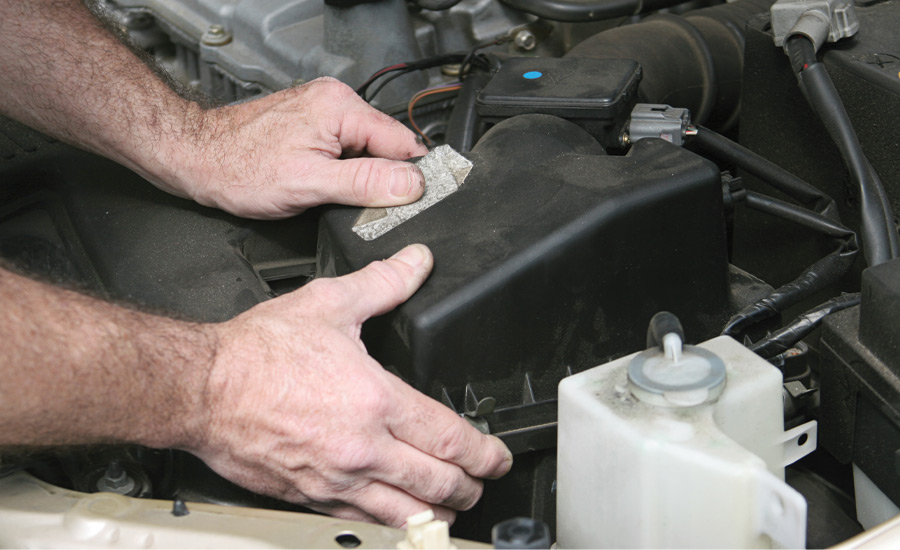
When it comes to a maintenance schedule, the same philosophy that applies to a fleet’s overall makeup is relevant here: there is no such thing as a one-size-fits-all solution. However, there are some basic guidelines every beverage delivery fleet should be following, regardless of size, and the experts are here to answer some frequently asked questions related to those.
If there’s a bare minimum that fleets need to be performing, maintenance-wise, what is it?
The short answer: there really isn’t one.
“You’re either all-in, or if you’re not, you’ll soon be in trouble,” says Ed Pritchard, senior vice president of fleet operations for Silver Eagle Distributors in Houston.
If you want to know what every fleet operator should never avoid, it’s preventative maintenance inspections (PMI), which are a must. In addition, making sure routine maintenance stays on-schedule should be a priority. Drivers always should be doing pre-trip, on-road and post-trip vehicle inspections every time they’re taking the truck out for deliveries. Pritchard also advises keeping a close eye on tire inflation, tread depth and casing age. “All three [of those] can make your vulnerable if you don’t stay on top of them,” he says.
Additionally, vehicles shouldn’t be operated/driven without a comprehensive brake maintenance and inspection program. “Do not try to go the cheap route,” Pritchard says. “You get what you pay for.”
The same applies to warehouse-based equipment such as forklifts and pallet jacks.
Silver Eagle Houston operates a wide range of equipment, from battery/electric pallet jacks and forklifts, all the way up to Class 8 freight equipment (and everything in between).
“It should be noted that scheduled maintenance or PMI is a systematic and periodic inspection and servicing of vehicles and their components,” Pritchard says. “There are many variables for establishing serviced intervals based on duty cycle, geographical location, equipment type and more. Through timely PMI, fleets can prevent the development of costly and potentially dangerous component failures.
What are some of the most common mistakes or incorrect assumptions that fleet managers make with regard to vehicle maintenance?
Everything goes back to whether or not the right vehicles are being deployed for the right jobs. Putting equipment out in the field to complete a specific task requires high-quality, properly engineered and specified units that are up to the specific task at hand, Pritchard asserts.
Lom Samford, vice president of operations at fleet maintenance provider Vehicare, observes that a common mistake fleet operators make is presuming that manufacturer-recommended service intervals for long-haul applications apply to local delivery vehicles. Every vehicle has its unique set of best practices.
What are some of the issues that are specific to beverage delivery — particularly DSD, local and urban delivery — that require special attention when developing a maintenance schedule?
Routing and stops each day should factor into every fleet’s preventive maintenance schedule. Delivery stops each day, Samford says, can directly relate to the duty cycle of major components on the equipment.
“Those components are often different than the standard over-the-road equipment,” Samford explains. “Communication between the drivers and the maintenance team is very important in the beverage industry because of the number of stops.”
Does having multiple drivers of multiple skill levels driving a single vehicle at varying times — as is common in this industry — put any extra stress on a vehicle?
The answer, as you’d expect, is “yes.” Mitigation of such begins with ensuring that the fleet has the correct specs to reduce the need for skilled or experienced drivers.
“Having dedicated preventive procedures for units that need added attention when not being driven by experienced drivers is a must,” Samford says. For example, a clutch adjustment will need to be scheduled at double the interval that a single-use experienced driver scenario would require.
What should be the individual drivers’ responsibilities relative to regular maintenance?
There is no overstating this: The driver is the first line of defense against breakdowns and repairs. That’s why the driver vehicle inspection report (DVIR) is critical. “A bad driver can destroy any hope of cost containment,” Pritchard warns.
Drivers, obviously, are the ones who spend the most time with a vehicle, and it’s incumbent upon them to communicate any truck problems to fleet management. A well-managed DVIR program, Pritchard notes, enables drivers to participate in the care of the vehicle by constantly monitoring the condition of the equipment on a daily basis.
“Inevitably, the equipment will need repairs,” Pritchard says. “When the driver communicates these repair needs to fleet immediately, they are proactively helping to reduce breakdowns and catastrophic component failures and assisting in cost containment.”
Of course, the driver won’t be able to do any of this without the right training related to proper inspection procedures. That requires the support of every department. “With a team effort, the PMI program can be a great success,” Pritchard says. “But it takes a company culture based on doing business in a responsible manner.”
Title: Scheduling preventative maintenance is not without its issues for fleets
Sourced From: www.bevindustry.com/articles/93003
Published Date: 04/12/20

No comments:
Post a Comment